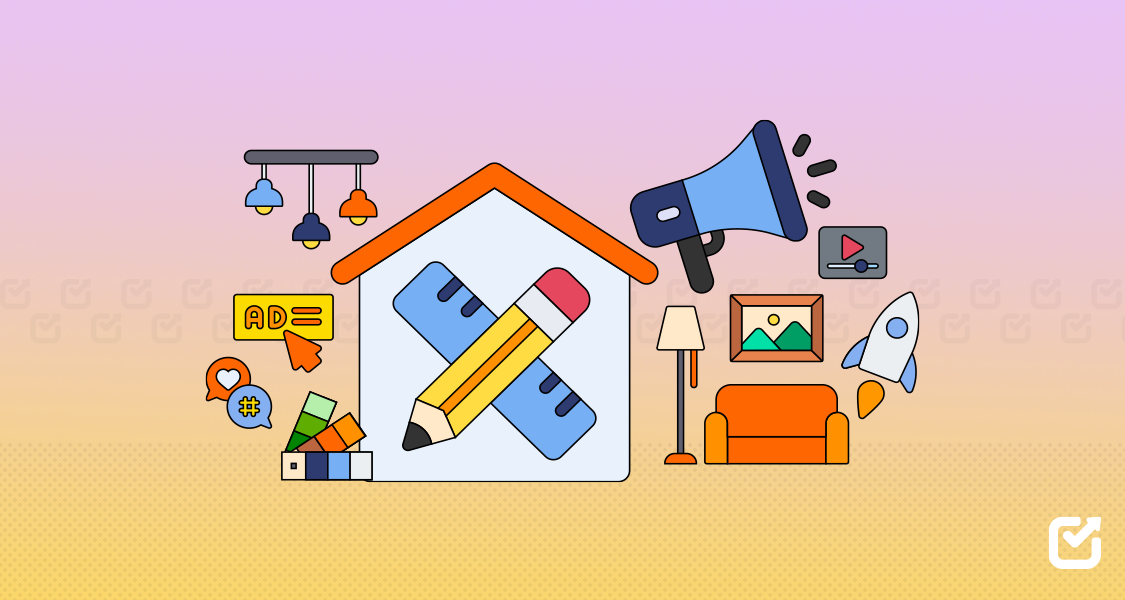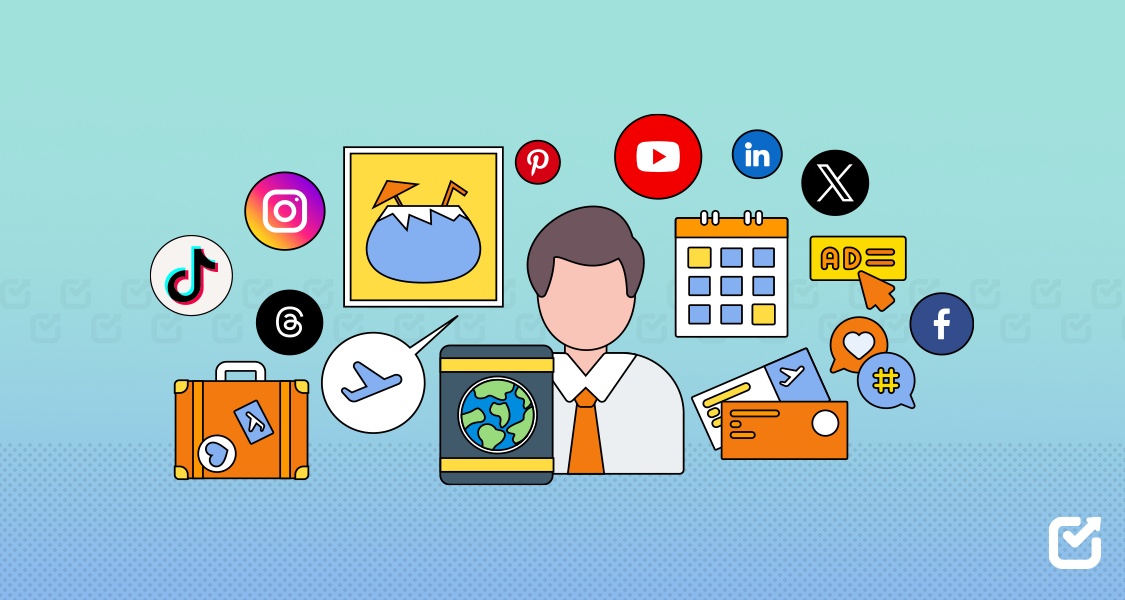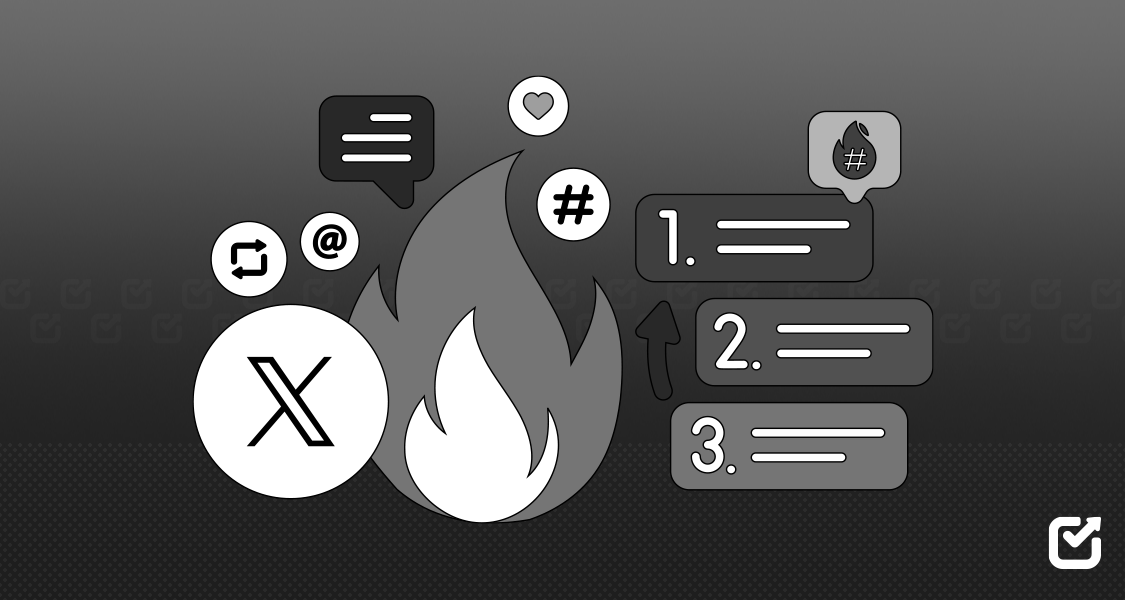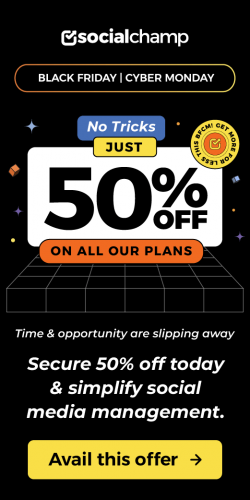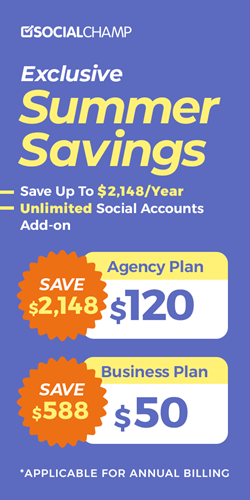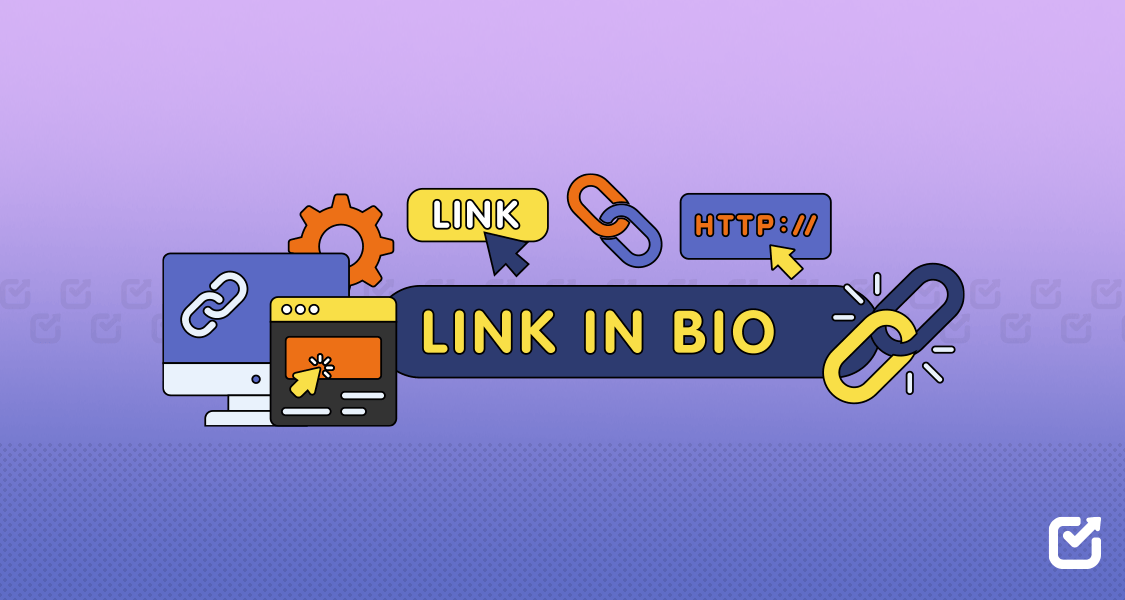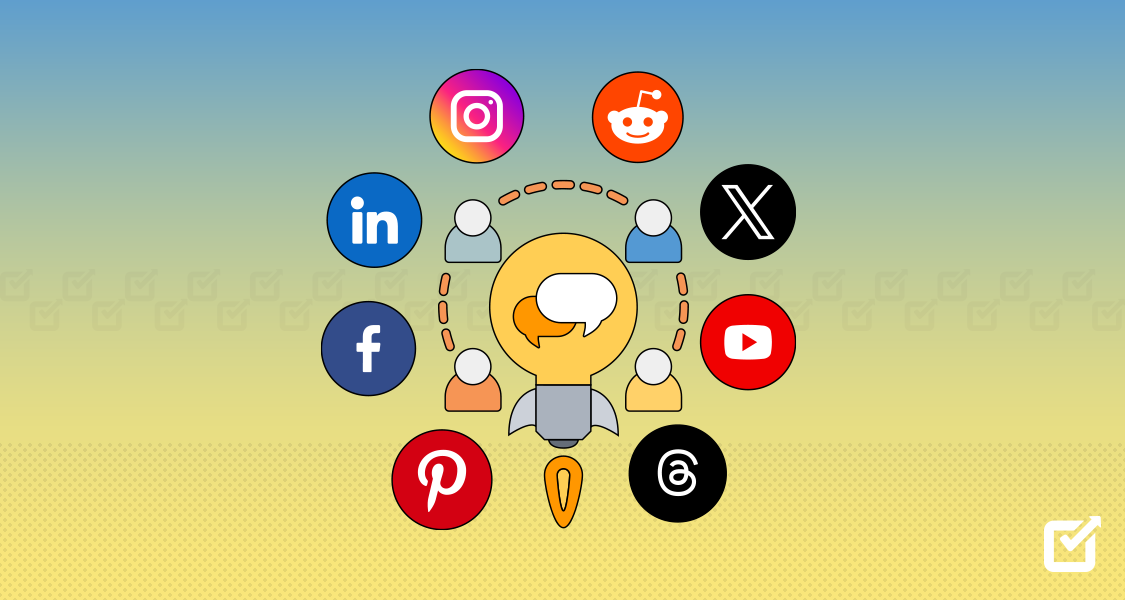When the 1990s first introduced us to software as a service in its primitive form, people could only imagine that one day it would become a 299 billion industry.
In the US alone, there are now around 9,100 SaaS companies.
Thanks to cloud computing and constant tech advancements, new SaaS businesses join the club almost daily.
The SaaS industry is becoming highly saturated, with companies offering similar or close to similar products.
With that being said, having just a good product won’t make you stand out anymore.
What you need is the ultimate SaaS marketing strategy.
Good for you, this is exactly what I’m going to cover in this blog.
I’ll let you in on 15 proven SaaS marketing tactics and social media management tools that make the process a lot easier.
Let’s get started!
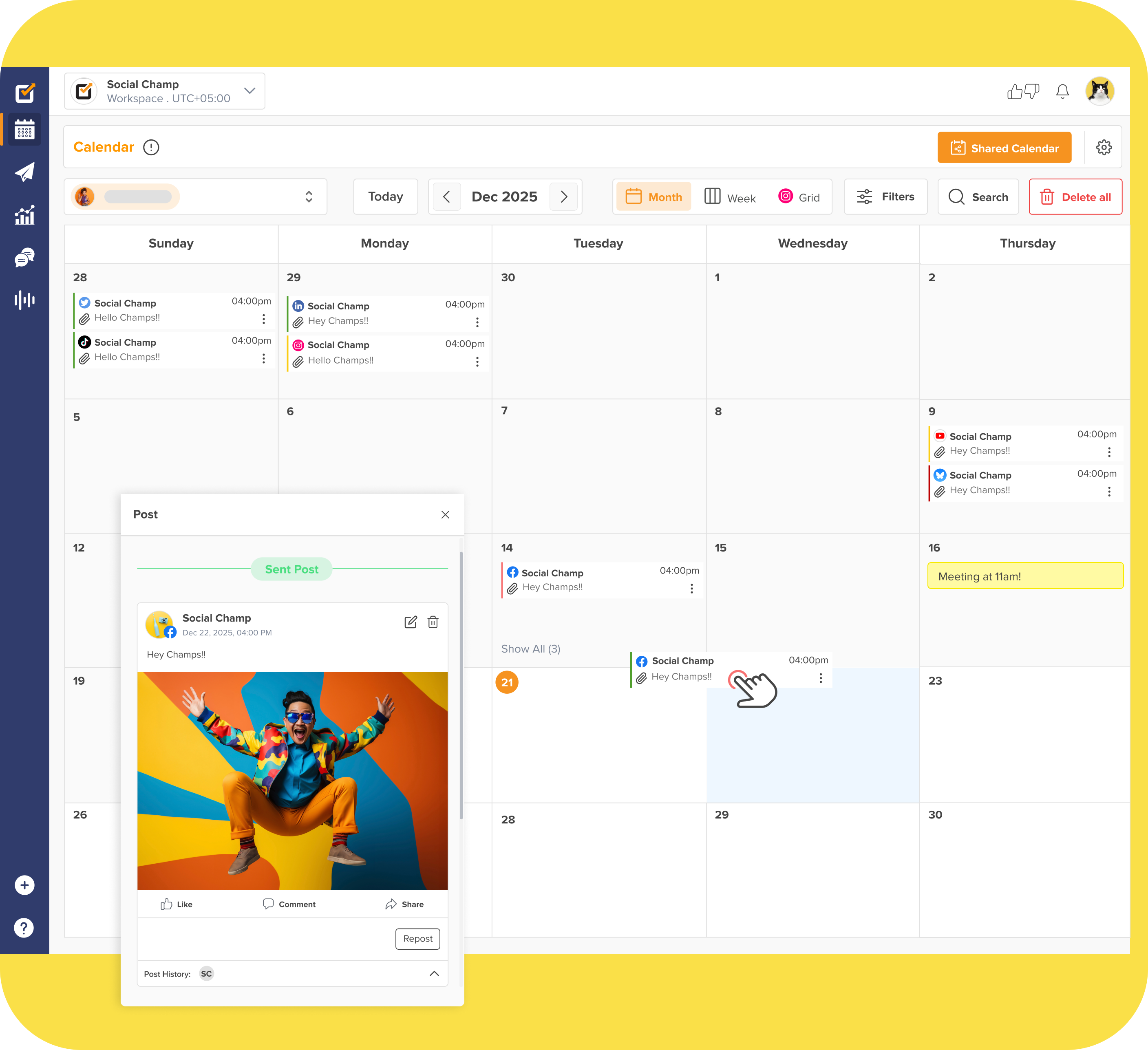
Want to Maximize Your Social Media Impact?
Easily schedule, post & analyze your social media content with Social Champ today and leave the competition behind.
Short Summary
- A winning SaaS marketing strategy involves understanding your target audience, leveraging digital marketing tactics, and optimizing customer acquisition and retention.
- Key marketing strategies include SaaS content marketing strategy, SEO, PPC, social media, email campaigns, and referral programs to drive brand awareness and conversions.
- Measuring performance through essential metrics like CAC, LTV, ARR, and MRR helps refine marketing efforts and maximize ROI.
- Social media automation, analytics, and engagement tools play a crucial role in scaling SaaS brands efficiently.
- Social Champ empowers SaaS businesses by streamlining content scheduling, engagement tracking, and performance analytics in one powerful platform.
- Continuous optimization, data-driven decisions, and the right tools are essential for sustained SaaS growth and customer retention.
What Is SaaS Marketing? (And Why It’s Different)
If you believe SaaS marketing is the same as conventional marketing practices, I want you to rethink your decision.
Apart from software being an intangible thing that your users can’t analyze in one or two glances, there’s another big issue.
While for ordinary products, the transaction ends once the customer purchases the product.
Yeah, customer retention is a major thing, but for your SaaS company, it’s not about your customer returning. It’s about your customer never leaving.
A SaaS marketing strategy consists of two steps: acquiring a customer and delivering value good enough that the customer happily pays for it every month.
Once you ace your SaaS marketing strategy, there will come a day when your customers find a monthly subscription bothersome and will instead choose the annual payment plan.
Featured Article: Social Media Audience Analysis: How to Understand and Engage Your Audience in 2025
How to Build a Winning SaaS Marketing Strategy
Now, let’s zero in on another layer of this subject:
How to build an effective marketing strategy for your SaaS business—one that actually works and drives growth.
Here are some vital steps you need to follow in creating the perfect SaaS marketing plan for your company.
-
Know Your Target Market
Is your target market B2B or B2C?
Since you are in the business, you already know how crucial knowing your target market is.
Your primary and most important task is learning your audience’s pain points, their needs, what compels them to make a purchase, and equally important, what drives them to send your application into the trash can. (Along with your seller-buyer relationship.)
The entire focus of your SaaS marketing strategy changes solely based on your target market.
For example, your B2C customer is a single buyer who probably makes an impulsive decision and can easily be swayed by your competition.
Whereas your B2B customer buys for his entire business, has many contributors to decision-making, and will only entertain your competitor if you fail to deliver customer satisfaction.
-
Determine Your Place in the Sales Funnel
Where does your SaaS product currently stand in the customer journey?
Are you a brand-new startup looking to create awareness, or an established name struggling with retention?
Understanding your position in the sales funnel helps you fine-tune your marketing efforts.
If you’re at the top, focus on brand awareness strategies like SaaS content marketing strategy, social media, and paid ads.
If you’re in the middle, double down on lead-nurturing tactics like email sequences, personalized demos, and free trials.
And if you’re at the bottom, optimize customer retention with loyalty programs, upsells, and dedicated support.
Each stage requires a unique approach—ignoring this step means you’re just throwing darts in the dark.
-
Set SMART Goals
Want to “increase sales” or “get more sign-ups”? That’s great, but it’s too vague.
Instead, set SMART goals—Specific, Measurable, Achievable, Relevant, and Time-bound. For example:
- Increase free trial sign-ups by 30% in the next three months.
- Improve customer retention by reducing the churn rate from 10% to 5% by the end of the quarter.
- Boost monthly recurring revenue (MRR) by 20% over the next six months.
With clear goals in place, you can track your progress and make data-driven decisions rather than relying on guesswork.
-
Analyze Your Competition
What’s working for your competitors? What’s not?
Competitor analysis isn’t about copying—it’s about identifying gaps and opportunities.
Study their content strategy, pricing models, customer reviews, and marketing channels.
Look at their strengths and weaknesses, then position your SaaS product as the superior choice.
Are they offering aggressive discounts? Focus on showcasing your unique value.
Are their customers complaining about poor customer support? Highlight your 24/7 assistance.
Do they lack a free trial? Use that as your competitive edge.
The goal? Learn from their wins and failures so you can refine your strategy.
-
Define Your Budget
Marketing isn’t free; SaaS marketing, in particular, can eat up cash quickly if you’re not careful.
Determine how much you’re willing to allocate for paid advertising, SEO, influencer partnerships, and automation tools.
Prioritize strategies that offer the best return on investment (ROI) rather than spreading yourself too thin.
And remember, you don’t need a million-dollar budget to make an impact.
Even a well-executed organic content marketing strategy can drive significant results if done right.
-
Invest in Relevant Tools
The right tools can supercharge your B2C or B2B SaaS marketing strategy, helping you automate tasks, track performance, and optimize customer engagement.
For starters, you’ll need a good social media management tool, such as Social Champ, which offers automation in all tasks related to SaaS social media marketing.
Other than that, you might need an SEO tool like Ahref and Google Console to monitor your website performance, etc.

Smarter Social Media Management Starts Here!
Boost Engagement, Save Time, and Track Performance—Try Social Champ for Free!
15 Most Effective SaaS Marketing Strategies for Growth
Growing a SaaS business requires a mix of targeted strategies that attract, engage, and keep customers hooked to your software.
Here are some of the most effective ways to scale your SaaS brand.
-
Content Marketing That Educates & Converts
High-quality content builds trust and authority.
Blog posts, guides, and case studies should address user pain points and offer actionable insights.
Repurpose content into videos, infographics, and social posts to maximize reach.
Consider Adobe as an example:

A Screenshot of Content Marketing by Adobe -
SEO for Long-Term Visibility
For an inbound SaaS marketing strategy, you can optimize your website and content with relevant keywords, fast-loading pages, and strong internal linking.
Consistently publishing optimized content improves search rankings and drives organic traffic.

A Screenshot of the Organic Search Engine Ranking on Google -
PPC Advertising for Quick Wins
Paid ads put your product in front of the right audience instantly.
Target high-intent users through Google Ads and social media platforms, refining campaigns with A/B testing for better ROI.

A Screenshot of Google Ads -
Social Media Marketing for Engagement
An active social presence helps build brand awareness and trust.
Leverage different platforms based on your target customers.
For a B2B SaaS marketing strategy, LinkedIn, YouTube, and email marketing work best.
Whereas for B2C, Facebook, Instagram, and TikTok are the top choices.

A Post of Canva on Instagram Showing Social Media Marketing Pro tip: Use Social Champ to schedule, automate, and track posts across multiple platforms, ensuring a consistent and effective strategy.
-
Referral Programs That Bring in Customers
Encourage loyal users to refer friends by offering exclusive perks.
A well-structured referral program helps attract high-quality leads while rewarding existing customers.

Dropbox’s Referral Program -
Email Marketing for Lead Nurturing
Personalized email sequences keep leads engaged, from onboarding to retention.
Automate follow-ups and segment users based on behavior for more targeted messaging.

A Screenshot of Shopify Email Marketing -
Free Trials & Freemium Models
Giving users hands-on experience with your product increases conversions.
Ensure the onboarding process highlights key features and delivers value early on.
-
Customer Reviews & Testimonials
Showcasing real user experiences builds credibility.
To boost trust, encourage satisfied customers to leave reviews and feature testimonials on landing pages.
-
Webinars & Live Demos
Interactive sessions help potential customers see your product in action.
Use live demos to highlight solutions, answer questions, and address objections in real-time.

The LinkedIn Post of the Demo Webinar by GitHub -
Influencer & Partnership Marketing
Leverage trusted voices in your industry to amplify your reach.
Partner with influencers, bloggers, or niche communities to introduce your SaaS to a broader audience.

A Screenshot Showing Zoom Partnering With Influencer and Singer Troy Sivan -
Community Building & Engagement
Engaged users stick around longer.
Create exclusive groups, discussion forums, or Slack communities where customers can connect, share insights, and get support.
-
AI-Powered Chatbots & Customer Support
Quick, responsive support enhances the user experience.
AI chatbots handle common queries instantly, freeing up human support for more complex issues.
-
Retargeting Campaigns for Higher Conversions
Remind past visitors about your product with retargeting ads.
Show personalized offers or valuable content to bring them back and encourage sign-ups.
-
Data-Driven Marketing for Smarter Decisions
Track campaign performance, analyze user behavior, and refine strategies based on insights.
Social Champ’s analytics help you measure social media engagement and optimize content for better reach.
-
Strong Onboarding to Reduce Churn
A seamless onboarding experience ensures users get value from your product quickly.
Offer step-by-step tutorials, in-app guides, or welcome emails to help new users get started.
Featured Article: Franchise Marketing 101: Strategies, Challenges, and the Best Tools to Succeed
Measuring & Optimizing SaaS Marketing Performance
A successful B2C or B2B SaaS marketing strategy isn’t just about executing campaigns—it’s about constantly measuring, analyzing, and optimizing for better results.
Without data-driven insights, even the best strategies can fall flat.
Tracking key performance indicators (KPIs) ensures that your efforts lead to sustainable growth and higher revenue.
Key Metrics to Monitor
- Customer Acquisition Cost (CAC): Measures how much you spend to acquire a new customer, including marketing and sales expenses. Lowering CAC while maintaining quality leads is crucial for profitability.
- Lifetime Value (LTV): Predicts the total revenue a customer will generate over their relationship with your business. A higher LTV compared to CAC means a more sustainable business model.
- Monthly Recurring Revenue (MRR): Tracks the predictable revenue from active subscriptions, providing insight into financial stability and growth trends.
- Annual Recurring Revenue (ARR): Offers a long-term view of revenue, helping SaaS businesses forecast and plan strategic investments.
- Churn Rate: The percentage of customers canceling subscriptions. A high churn rate signals retention, onboarding, or customer satisfaction issues.
- Conversion Rate: Measures how well your marketing campaigns turn leads into paying customers. This includes trial-to-paid conversion, landing page performance, and ad efficiency.
- Net Promoter Score (NPS): This score measures customer loyalty and satisfaction by indicating how likely users are to recommend your product. A high NPS reflects strong brand advocacy.
How Social Champ Empowers SaaS Brands on Social Media
A strong social media presence is essential for SaaS brands to engage users, build trust, and drive conversions.
Social Champ simplifies social media management with powerful automation, scheduling, and analytics features.
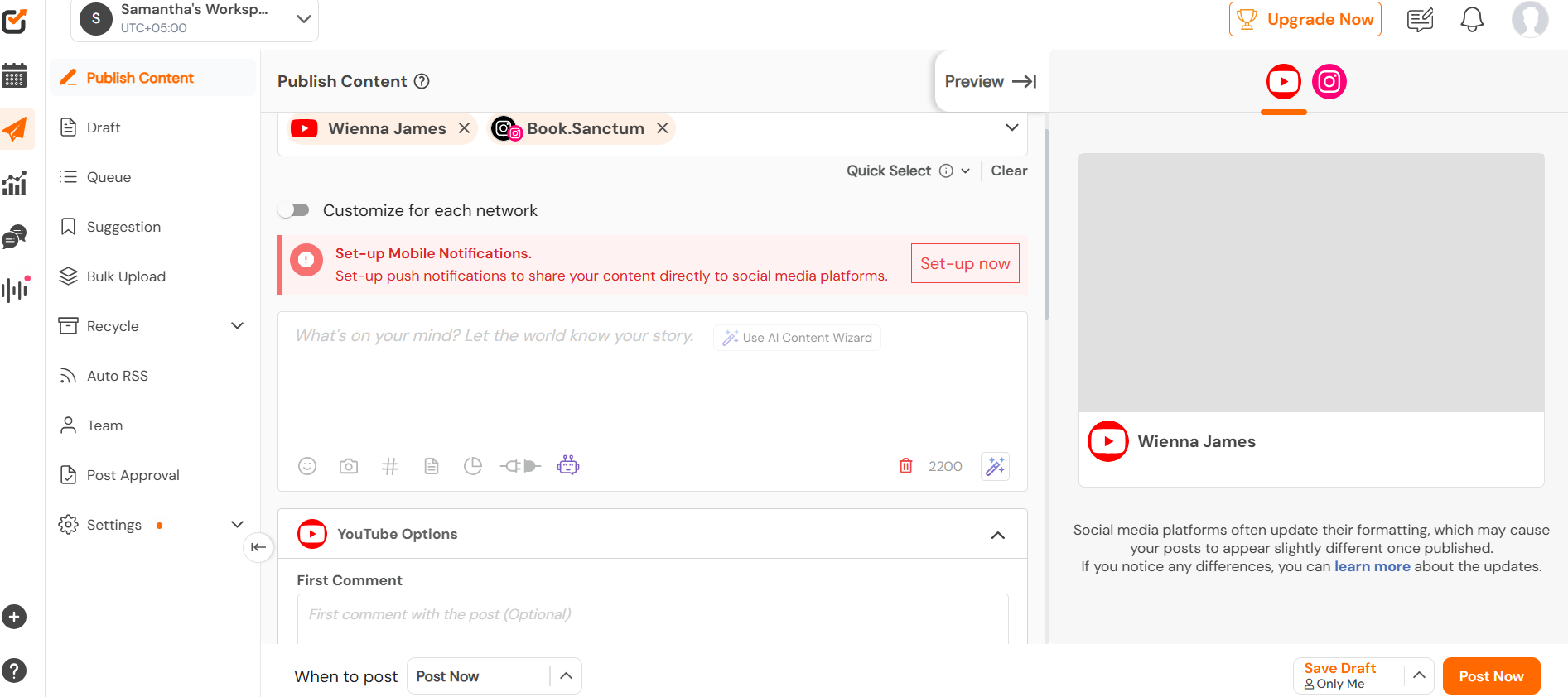
Read on to discover how Social Champ empowers SaaS brands on social media.
- Effortless Scheduling: Plan and schedule posts across multiple platforms in advance.
- Smart Automation: Automate content repurposing and recycling to maximize reach.
- Deep Analytics: Track engagement, analyze performance, and refine your strategy for better results.
- Manage Teams & Collaboration – Assign roles, approve posts, and ensure brand consistency with seamless team collaboration features.
- Recycle Evergreen Content – Repurpose and reshare high-performing content to maintain engagement without creating new posts from scratch.
With Social Champ, you can focus on scaling your SaaS while ensuring a consistent and impactful social media presence.

Keep Your SaaS Social Media Active Without Manual Posting!
Plan, schedule, and post content across multiple social platforms from one intuitive dashboard. Try it now!
Conclusion
You need a powerful SaaS marketing strategy in the rapidly booming software service industry.
Each strategy plays a role in driving sustainable growth, from optimizing SEO and PPC campaigns to leveraging social media automation and customer referrals.
However, success isn’t just about launching campaigns—it’s about consistently measuring performance, analyzing key metrics, and refining your approach to maximize ROI.
This is where Social Champ becomes a must-have tool for SaaS brands.
With powerful automation, analytics, and engagement tools, you can streamline your social media strategy, track performance, and build a more substantial online presence—all from one intuitive platform.

